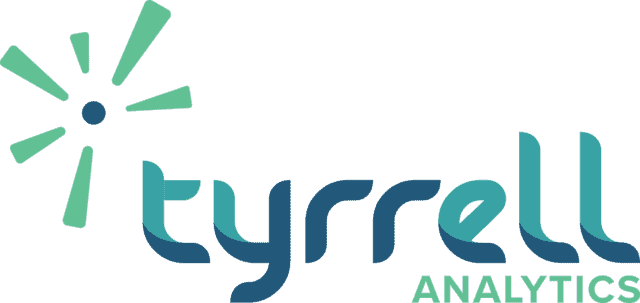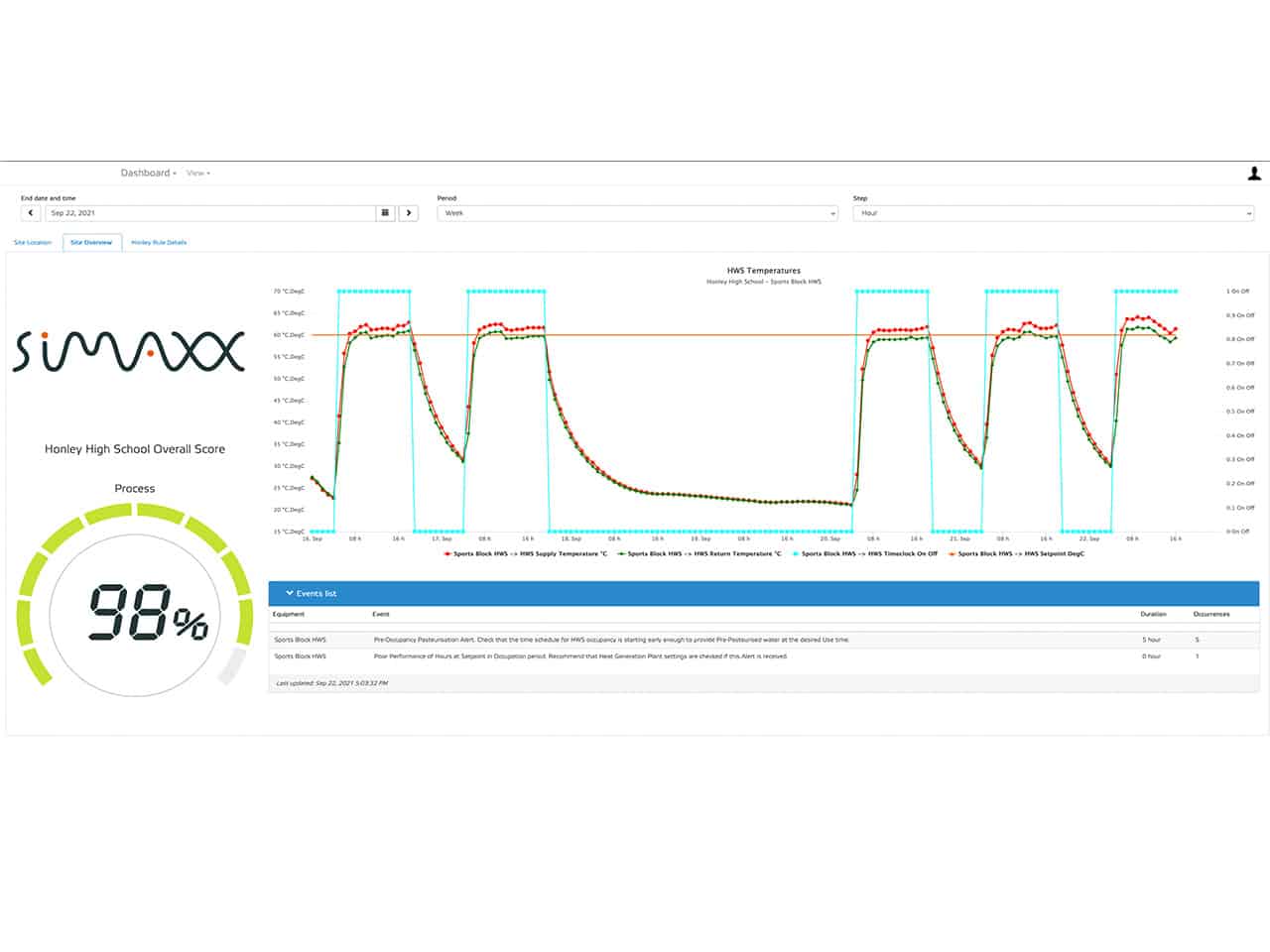Aquaportal Case Study
Careful implementation of Simaxx’s monitoring features has allowed the platform to resolve a wide range of issues, with one of the most notable being the Aquaportal platform. With only a few steps to set up Simaxx and connect the right monitoring tools, the White Labelled version of our platform has been able to provide accurate legionella reporting in a range of circumstances.
This legionella monitoring analytic case study provides a good example of how reporting can be necessary for public safety, especially when health risks like legionella bacteria are involved. Accurate monitoring and reporting are vital for securing the right information to tackle serious threats and concerns properly.
A brief overview of the importance of Monitoring for Legionella
Legionella is commonly found in water, multiplying at temperatures between 20-45 °C. If inhaled through airborne water droplets created by water systems, legionella tends to cause Legionnaires’ Disease, a fatal type of pneumonia.
Identifying it visually is not an option, given how the virus travels. It is possible to test for legionella in water by taking a sample and sending it to a professional lab, but this will do nothing to treat the existing legionella present in the water.
The best protection is to prevent it from ever spreading in the first place, and that means being prepared ahead of time. Simaxx can provide the monitoring needed to detect legionella issues, as well as the centralized platform your business or property may need to track the spread of legionella once you implement measures to control it.
Our most successful case study of this implementation was through our partner, Aquaportal, who created a white-label version of the platform to provide an infallible legionella reporting framework for protecting some highly vulnerable school sites.
What was the situation at the target sites before IoT devices and the Simaxx / Aquaportal platform were used?
The school sites this case study focused around were in a very legionella-vulnerable state, having almost no effective way to combat the spread of legionella or ensure compliance with relevant regulations and requirements. These sites were, for all intents and purposes, incredibly unprepared for the threat that legionella can pose.
While they had a single building management system, it was underdeveloped and required manual input to operate to its full effectiveness. This lack of automation meant a lot of downtime where legionella could spread unchecked and put many of the occupants of the sites at serious risk of contracting Legionnaires’ disease throughout their daily schedule.
The methods being used to monitor the spread of legionella, and manage the water as a whole, were basic. The school sites used a combination of time clocks and thermostats to manage and regulate temperature at specific times but had no real monitoring methods for identifying legionella threats effectively. There were also minimal pre-emptive steps taken to deal with cases of Legionnaires’ disease or an easy way to identify exactly where the legionella bacteria had begun to multiply.
What Did This Mean?
The sites in question were in a situation where they could not identify and report on legionella bacteria fast enough or consistently enough, to do anything about it. The labour-intensive reporting system removed a lot of consistency since reports could only be made when somebody was actively using the BMS and checking legionella-related information.
This meant that reports could be delayed, forgotten, or even handled incorrectly with minimal oversight. The BMS was not able to correct mistakes or provide much valuable information, with thermometers doing the bulk of the monitoring work. Alongside this, there needed to be more unification, meaning that key data was not necessarily being added to the BMS for easy access.
There needed to be a consistent method in place to monitor the threat of legionella through the hot water system or to produce reports that could have offered further data about the legionella’s spread and the areas it was most concentrated.
Without effective reporting, it becomes extremely difficult to either manage existing problems or compare current issues against historical data. Without this basic functionality in the BMS, the school staff struggled to make any headway against legionella and would have needed to rely on unpredictable solutions to stave off the spread of the bacteria due to incomplete data.
How was the solution applied?
Simaxx was implemented here as a white-label platform – a platform produced by a company for another company, rebranded with the Aquaportal name. Despite the difference in branding, the Simaxx platform was still at the heart of the process and provided all of the same services and tools to ensure maximum monitoring effectiveness and data storage capabilities.
First, the original systems were checked and inspected to find major faults, of which there were multiple. The site’s BMS was not suitable for tackling legionella bacteria at such a scale and could not effectively detect the bacteria oralert staff to any kind of health risks once it began to spread. This limited the options that the school sites had in dealing with legionella, often forcing them to make judgments without having any hard data to back up their own solutions.
Aquaportal installed Tyrrell IoT devices for monitoring purposes, then integrated Simaxx as a central monitoring system using a cloud hosted Simaxx Niagara service. This enabled easy monitoring of a range of factors, all from one central platform. The use of a cellular gateway to measure critical elements such as temperature allowed for a secure and direct connection, placing all data in the Simaxx Portal for processing.
New rules and plans were then created to ensure that the schools could carry out continuous testing and monitor for legionella bacteria effectively. These rules were created with assistance from Aquaportal to ensure that no details were missed or left out. This was followed by the creation of a new site dashboard, making monitoring key metrics even easier for the facility management and school staff.
This solution was relatively simple but provided a range of benefits over the original BMS system. The improved legionella reporting (thanks to template reports for legionella monitoring) was just one of many additions that make a long-term difference to how the school sites tackled legionella bacteria and Legionnaires’ disease.
What were the outcome and benefits of the implemented solution?
This implementation of Simaxx offered a range of benefits to the school sites that received it.
Firstly, the solution identified some flaws with the previous strategies, including the non-performance of some plant-level mechanisms and systems that could potentially allow legionella to spread.
Simaxx’s implementation opened the gateway for additional tools and monitoring equipment to be integrated into the system as needed. The site’s original BMS was straightforward and lacked some of the flexibility that Simaxx can provide, which would eventually have limited the site’s ability to monitor more risks without major improvements.
The optimization of the, mostly manual, monitoring system removed a lot of the drawbacks associated with hands-on monitoring work, such as poor consistency, lack of constant monitoring, and the heavy reliance on personal understanding of the data being gathered. With Simaxx operating at the school sites, information is more readily available and stored in a more effective, useful way.
In terms of direct benefits, the introduction of in-depth monitoring of public health risks and plant safety ensured that the school sites would have more ways to protect themselves. This enhanced monitoring covered more than the original BMS had, allowing for a much more varied stream of data while keeping the information clear and readable for the staff taking charge of the monitoring work.
Continuous visibility was another core benefit. Keeping information accessible and clear meant that different risks and factors could be accounted for more readily. The monitoring systems installed by Aquaportal were adjusted to manage legionella monitoring more effectively, providing consistent and easily understandable alerts whenever legionella bacteria began to spread too fast or threaten public health and safety.
Like many sites that implement Simaxx, reporting was perhaps the biggest benefit. Simple and straightforward reports became more accurate, more consistent, and significantly quicker to produce, all while having a sharp reduction in errors or mistakes that could have made them less useful. These valuable reports are not only produced more often and faster but with a higher standard of accuracy that makes them useful for legionella monitoring and management.
All of this has made these school sites far more efficient at dealing with their own legionella risks. They can monitor the water system for signs of legionella, record information into reports, analyse data to find any hints of a legionella build-up, set up automated alerts, track legionella risk changes, and formulate effective responses whenever legionella threatens to pose a direct health and safety risk to anybody within the site.
Simaxx partner, Aquaportal, has created a White Labelled version of the Simaxx Platform to provide Legionella monitoring for Schools. With a large variation in types of Hot Water monitoring and control systems installed, the Simaxx Platform was able to provide a consistent reporting framework for Legionella compliance.
Typical Scenario
In most situations, schools have a stand-alone, automated, control system (BMS) that controls the temperature of Hot Water for domestic use. The control system manufacturer can vary from site to site and the extent of the control can vary greatly. For the maintenance provider, monitoring the performance of the Hot Water system is a labour intensive process of either making manual temperature readings from the HWS plant and converting these readings into graphs from a spreadsheet or analysing BMS graphs from the site computer.
Providing consistent reporting is an issue as graphs from systems across sites will vary in composition and content. Prior to instigating ‘Aquaportal’, our partner was creating reports through the use of ‘screen grabs’ from the site BMS system.
Aquaportal Solution
The Simaxx / Aquaportal solution uses lightweight IoT sensors combined with a Cellular gateway to measure critical temperatures from the HWS plant. Using a secure cellular connection, the data is transferred to the Simaxx Portal where the data is processed.
Analytic rules are created to highlight non-compliances of the system. The rules were created in conjunction with Aquaportal to comply with the approved code of practice ACOP L8 from the HSE.
A site dashboard is created that displays the key data and rule performance.
The Platform also provides report templates for simple time based reporting to be carried out. In this way, a consistent monitoring and reporting methodology is maintained regardless of the system controlling the plant at the site. Customers are notified of any issues through user email accounts, maximising the benefits of the 24/7 monitoring.
Conclusions
A simple, yet powerful use case of the Simaxx analytic platform. Aquaportal is providing efficiency benefits to the maintenance provider in terms of reduction in man-hours to monitor the critical plant.
For a critical plant with public health implications, immediate notifications of non-compliance of plant and equipment are very important. The Simaxx / Aquaportal partnership provides this and also provides documentary evidence to show the maintenance provider’s commitment to the best possible health of the building occupants.
Solution: Compliance Monitoring
Solution: Legionella Monitoring
Product Feature: Dashboard and Visualisation
For further information contact: [email protected]

